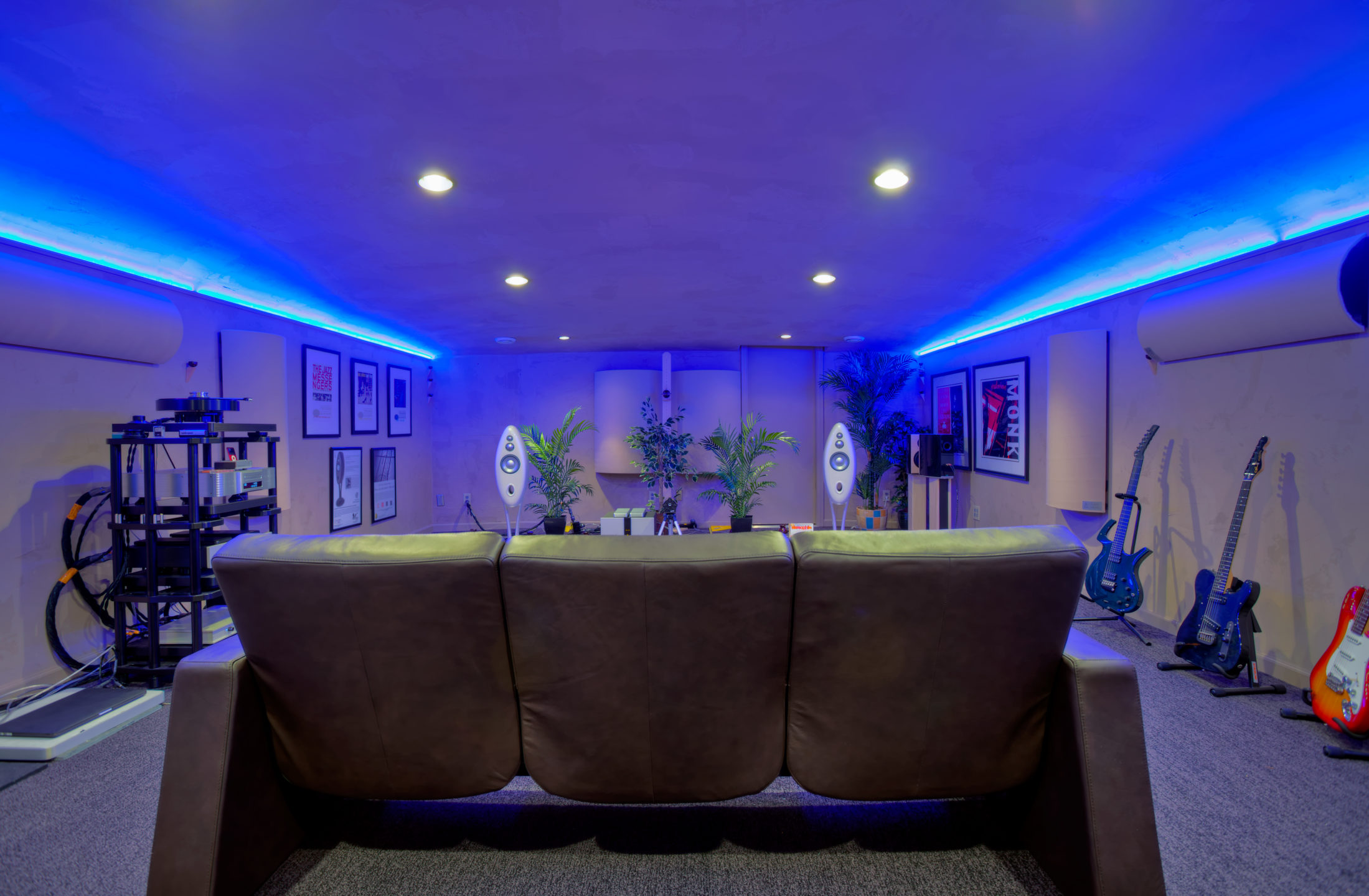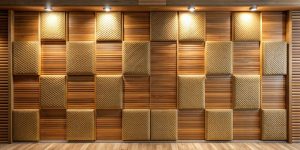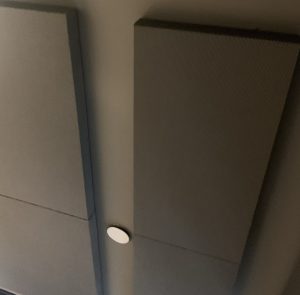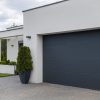Sound Diffuser vs Acoustic Panel: How to Know Which to Use?
When it comes to acoustical treatments, there are two main concepts that greatly influence the way a space sounds. They are diffusion and absorption. Each plays an important role in providing the space that it needs to deliver the best possible sound. To achieve the right balance, we turn to sound diffusers and acoustic panels.
Understanding what they are and how they work will allow you to solve your audio issues in a professional manner. Knowing when and where to use a sound diffuser vs acoustic panel will help you choose the right product. But what is a sound diffuser and what is an acoustic panel? Here’s the difference, in a nutshell.
Sound Diffuser vs Acoustic Panel: What’s the Difference
Sound diffusers and acoustical panels are both acoustical materials, but each works very differently. Sound diffusers scatter sound waves, while absorbers trap and eliminate them. Let’s look at sound diffusion vs absorption in terms of light.
If you shine a spotlight on a mirror ball, each individual facet of the ball reflects light in a different direction. That’s how we turn a single beam of light into an array of multidirectional reflections. Diffusion is, very simply, spreading something more widely.
If you were to shine that same spotlight into a thick, plush blanket, the light would be absorbed. The thicker the blanket and more porous its surface, the less light escapes into the room. This is absorption.
Both of these concepts are important in creating spaces that sound great. In order to illustrate how they do it, we first need to look at how sound waves travel.
How Sound Waves Travel
Sound waves are caused by the movement of sound energy through air, water, and other solid or liquid mediums. Once created, they will continue on in a straight line until they reach an object. At this point, one of two things happen. Either the sound wave is reflected or absorbed, or some combination of the two. The interactions between sound waves and surfaces can cause acoustical issues, especially indoors.
When sound waves strike hard, smooth surfaces like walls, windows, and floors, they reflect. When reflections get out of control, that’s when things get interesting, acoustically speaking.
As reflections return to their source, we hear an echo. You are undoubtedly familiar with the term. The time it takes to travel to the source to the reflection point is what causes the delayed sound we are all familiar with. Echoes can make conversations difficult, and when they build up in the room, can even cause reverberation.
Reverberation is the term for sound waves building up in space and gaining in intensity as a result. The waves bounce around in the room until they are absorbed by something. Reverb makes rooms louder, and often results in people getting louder to compensate. It makes communication difficult and can ruin a recording or movie night.
The solution to both these acoustical issues is acoustically treating the room with sound diffusers and acoustic panels.
Sound Diffuser vs Acoustic Panel: Making the Right Choice
Now that we’ve examined how sound travels through space, we’ll get down to how acoustical treatments improve sound. We know the difference between absorption and diffusion, but how do we choose the right solution? In the sound diffuser vs acoustic panel battle, it all comes down to your acoustical goals.
Making the Room Quieter
When we want to make rooms quieter, we turn to sound absorbers. Since built up reflections cause issues, we want to absorb them. Sound absorbers are made of dense, porous materials that allow sound to pass in, but not out.
When waves impact sound absorbers, their vibrational energy is turned into heat energy. Since energy cannot be destroyed, this transition is necessary in absorbing it. There are some great products that work wonderfully for this purpose.
Fabric Wrapped Acoustical Panels
One of the most popular sound absorption tools on the market is the fabric wrapped acoustical panel. These types of panels are constructed of a dense, absorbent center, held together by a frame and wrapped in acoustically transparent fabric. Acoustically transparent fabric allows sound waves to penetrate the absorbent center, where they become trapped.
The fabric can be printed with any color or design you like. Your artwork can serve as a sound absorber hidden in plain sight. Compare these to artwork covered in reflective glass, and you can easily see how transitioning to absorptive artwork can help improve room acoustics.
Acoustic Foam
Another common type of sound absorber is acoustic foam. You may have seen these panels in places like recording studios and music rooms. They resemble egg cartons and are made of soft foam that can easily be cut and arranged to cover entire walls seamlessly. They do a great job of absorbing higher frequencies, but miss some mid frequencies and don’t deliver the same aesthetic appeal that fabric wrapped acoustical panels do. Acoustic foam is an excellent solution for spaces that require a lot of coverage, but don’t require highly end aesthetics.
Wood Wool
If you’re looking for a more sustainable option, wood wool is a great sound absorber to think about. Wood wool is crafted of wood shavings, known as excelsior, bound with water and cement. This combination creates a panel that’s incredibly efficient at absorbing sound waves.
Aside from their sound absorbing properties, wood wool panels look great to boot. They too, can be painted in an array of colors, and add earthy textures to your walls. You’ll love the look.
Placement Matters
Simply throwing up a few sound absorbers without a plan may leave you underwhelmed by the results. Once you’ve solved the sound diffuser vs acoustic panel debate, identifying the best placement is the next step. Since direct reflections may be the most important waves to capture, placing panels at the first reflection points will do you the most good. Here’s how to locate them.
First, identify where you will be seated most often. Sit in that location and ask a friend to hold a mirror at eye level along the wall. Have them move the mirror horizontally until you can see the closest speaker in the reflection. If your friend is on the right wall, note the location where you can see the right speaker. If they are on the left wall, note the location where you can see the left speaker. These are your first reflection points. Placing sound absorbers at these locations will eliminate any echo that would prevent you from hearing the sound clearly.
Placing sound absorbers behind the speakers and along the back walls will also help tremendously. Keep them at the same level as the speakers to ensure you capture the most direct reflections possible.
Panels can even be suspended from ceilings. This is a fantastic way to absorb airborne sound waves as they traverse space. Suspended sound absorbers reduce echo and reverberation and they’re incredibly eye-catching.
Making the Room Sound More Natural
Another reason we use acoustical treatments is to make the space sound more natural. In nature, we very rarely encounter perfectly flat surfaces that create enclosed environments. Imperfect, natural surfaces reflect sound waves in many different directions. That’s what we want to emulate.
Diffusers win in the sound diffuser vs acoustic panel debate here, so what does a sound diffuser do, exactly? It scatters sound waves to recreate the types of reflections we hear in nature. Think of it as a noise diffuser that separates the noise from the sound we’re really after.
Differently shaped diffusers cause sound waves to scatter in different patterns. Some diffusers are cylindrical, some look like a skyline, and others may resemble a panel of repeating pyramids. Each type of acoustic panel diffuser throws reflections in different directions. The result is a more natural sounding space without overt echoes or excessive reverb. Recording studios and media rooms are two places people utilize diffusers widely. These are the types of places where you want impeccable sound.
Recording Studios
When we’re recording audio, too many direct reflections can cause the track to sound unnatural. The high end microphones we use to get the best possible sound will also pick up echoes. Scattering sound waves is necessary to eliminate them and create crisp and clear recordings.
Media Rooms and Theaters
When we spend big bucks on high end equipment, we want to get the most out of it. Something as simple as adding a sound diffuser to the back wall can improve the sound tremendously. If you’ve ever struggled to hear dialogue in movies or nuance in music, you already understand the impact acoustics have. Scattering sound waves improves the quality of the sound and the intelligibility of the voice.
Sound Diffuser vs Acoustic Panel: The Takeaway
Understanding the concepts is the first part of the puzzle, but it doesn’t end there. Sometimes sound absorbers will do the trick. Other times a sound diffuser is required to get what you’re after. Often, a combination works best. Placement matters too.
When it comes to choosing a sound diffuser vs acoustic panel, understanding your space and knowing what you’re after are the biggest variables. If you want some help getting it right the first time, your best bet is to consult the pros.
We can tell you how to treat your unique space to eliminate acoustical issues and deliver beautiful sound. We can even point you in the right direction when it comes to material choices. Not all acoustical products are created equally, and working with someone who knows the ins and outs can help tremendously.

















Leave a reply
You must be logged in to post a comment.